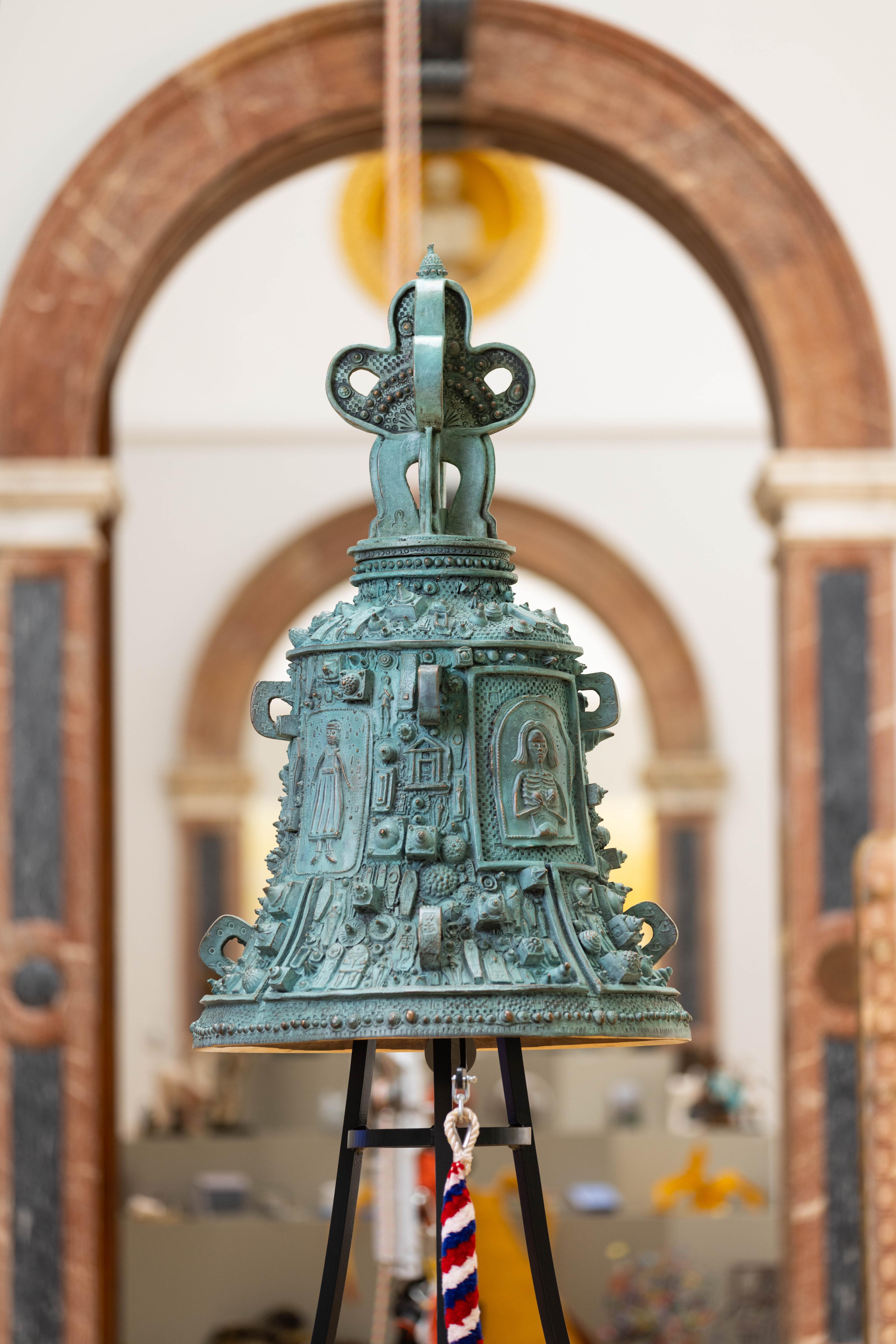News
Another example
The notion was that the pavements were already set with pieces of ironwork, made it a natural idea to introduce pieces of sculpture, and the emblems and locations were chosen to reflect the culture and history of Spitalfields. Sometimes there was a literal story illustrated by the presence of the roundel, like the match girls from the Bryant & May factory who met in the Hanbury Hall to create the first trade union. Elsewhere, like the scissors and buttons above in Brick Lane, the roundel simply records the clothing industry that once existed there. Once there were interpretative leaflets produced by the council which directed people on a trail around the neighbourhood, but these disappeared in a few months leaving passersby to create their own interpretations.
The roundels have acquired a history of their own. For example, the weaver’s shuttle and reels of thread marking the silk weavers in Folgate St were cast from a shuttle and reels that Dennis Severs found in his house and lent to Keith. And there was controversy from the start about the roundels, when two were mistakenly installed on the City of London side of the street in Petticoat Lane and at at the end of Artillery Passage in City territory, leading to angry phone calls from the Corporation demanding they be moved. Six are missing entirely now, stolen by thieves or covered by workmen, though occasionally roundels turn up and wind their way back to Keith. He has a line of errant roundels in his hallway, ready to be reinstalled and, as he keeps the moulds, plans are afoot to complete the set again.
Example post
Around the streets of Spitalfields there are circular metal plates set into the pavement. Many people are puzzled by them. Are they decorative coal hole covers as you find in other parts of London? Or is there a mysterious significance to them?
Sculptor Keith Bowler was walking down Brick Lane one day when he heard a tour guide explaining to a group of tourists that these plaques or roundels – to give them their correct name – were placed there in the nineteenth century for the benefit of people who could not read. Keith stuck his neck out and told the guide this was nonsense, that he made them on his kitchen table a few years ago. And although the tour guide gave Keith a strange look and was a little dubious of his claim, this is the truth of the matter.
Showing 2 of 2 articles
